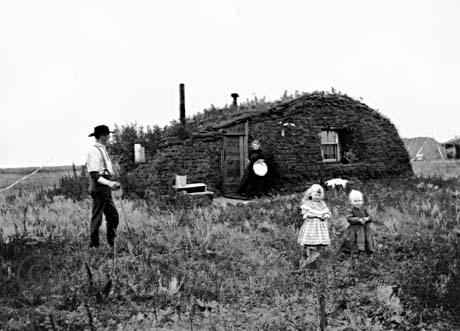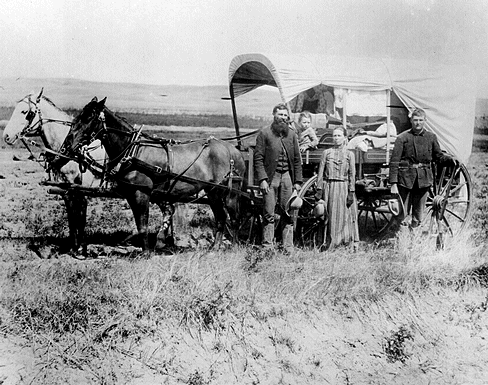
Homesteaders crossing Indian lands, painted by Oscar Edmund Berninghaus
In the second
half of the 19th century, agrarian expansion went forward on the
Great Plains amidst high hopes and expectations. Railroads
wanted settlers, both as purchasers of land and as future freight
customers. As competition between railroads headed up, the
fervor of the promotions increased proportionately, supplemented by
the state boards of emigration. Business and politics
merged. Recruitment of settlers was the fulltime occupation
of some government agencies.
click here for more history on the agrarian
expansion in the American West.

Homesteaders on the plains.
Set against
this background of frenetic promises and publicity, the reality on
the ground was disillusioning. Much of the best land was
already in the possession of railroads and states, and outright
purchase of land was the most unusual means of obtaining a family
farm or homestead. Thousands of homesteaders were deceived
into thinking that securing a piece of land was all that was
necessary to 'proof up' a land claim, in the same way descriptions
of the gold fields had assured wild-eyes forty-niners that success
was guaranteed for anyone who showed up in California.
Until the water problems could be sorted out by
government agencies in the 20th century, the dream of homesteading
on the High Plains more often than not ended in ruin, just as John
Wesley Powell predicted in his reports to Congress twenty years
before.
Related People
Related Events
Related Flashpoints
Related Places